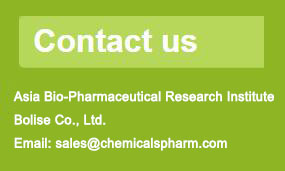The aqueous solution of hydrogen iodide is called hydriodic acid. Hydroiodic acid is a strong acid, and acidity and perchloric acid are equivalent (there is information that the acidity of hydriodic acid is stronger than that of perchloric acid), but because of the leveling effect, the acidity of hydrogen iodide in water is the same as that of nitric acid and hydrochloric acid, so it is compared. The acidity of these strong acids is compared in glacial acetic acid.
The hydrogen ion ionized by hydroiodic acid is oxidizing and can dissolve active metals and silver before hydrogen, such as:
1. Reaction of hydriodic acid and magnesium: Mg+2HI→MgI2+H2↑
2. Reaction of hydroiodic acid and iron: Fe+2HI→FeI2+H2↑
3. Hydroiodic acid reacts with silver to form silver iodide with very low solubility: 2Ag+2HI→2AgI+H2↑
Iodine ions ionized by hydroiodic acid have a certain degree of reducibility, and can reduce trivalent iron ions to obtain ferrous, iodide and iodine. Hydrogen iodide is unstable, and is decomposed into hydrogen and iodine by heating. The long-term aqueous solution of hydrogen iodide turns the solution into yellow due to iodine.
1. The laboratory uses dry red phosphorus and iodine to contact each other, and add a small amount of water to slightly heat. The generated gas was passed through a short rod glass U-shaped tube with a moist wet red phosphorus, and collected to obtain Hydrodicic Acid. H2+I2====(heating) 2HI, the reaction is reversible. (Note: White phosphorus cannot be used in the reaction, and white phosphorus can spontaneously ignite when exposed to iodine!)
2. Industrially, hydrogen and iodine can be directly synthesized by platinum black or platinum asbestos catalysis: H2+I2==== (without heating) 2HI, this reaction is reversible.
3. Use non-oxidizing, non-volatile phosphoric acid and iodide: NaI+H3PO4= NaH2PO4+HI↑
4. Hydrolysis of non-metal hydrogen halide: PI3+3H2O=H3PO3+3HI↑






